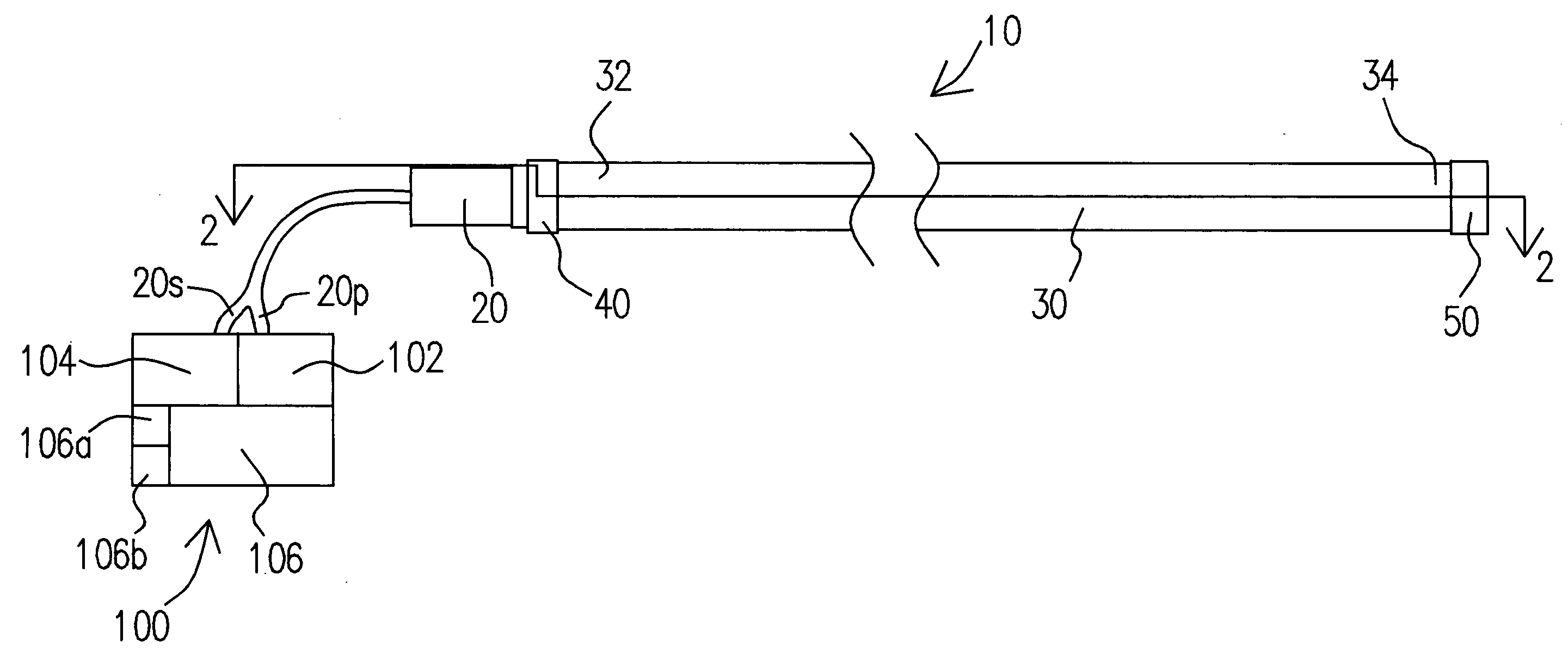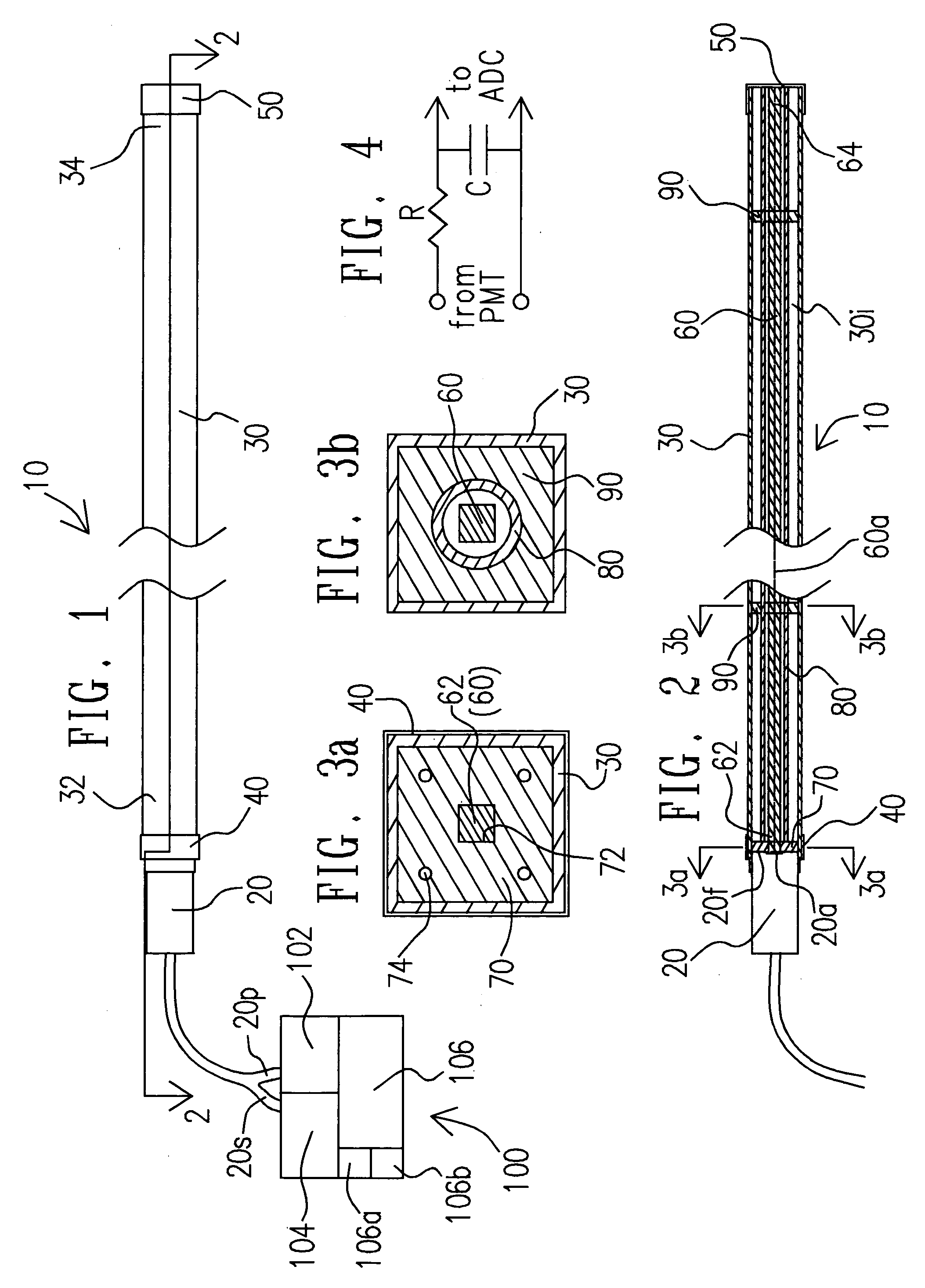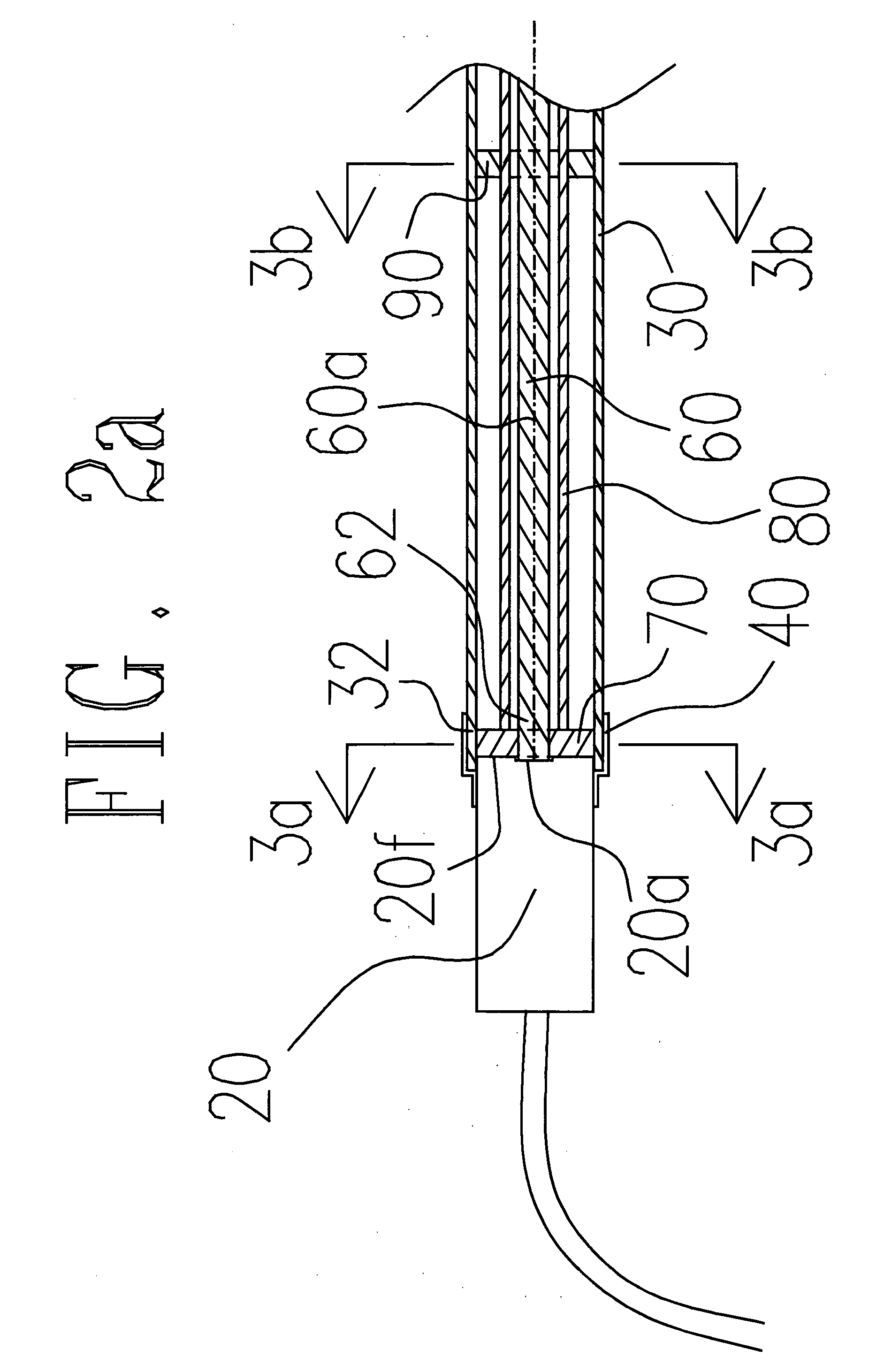Fast, simple radiation detector for responders
a simple, fast technology, applied in the field of radiological detectors, can solve the problems of increased personnel and training, increased cost of detection equipment, and threat to the u.s. homeland security, and achieve the effect of avoiding false-positive responses and low cos
- Summary
- Abstract
- Description
- Claims
- Application Information
AI Technical Summary
Benefits of technology
Problems solved by technology
Method used
Image
Examples
second modified embodiment
[0066] Referring now to FIGS. 10a and 10b, there is shown a small scintillating fiber (small SF) radiation detector for homeland security according to the invention. Except as described below, the structure of the second modified scintillating fiber radiation detector for homeland security 10″ is substantially identical to the structure of the scintillating fiber radiation detector for homeland security 10 shown in FIGS. 1 to 4, and for the sake of brevity, the details of that preferred embodiment are incorporated by reference into the second modified embodiment.
[0067] In the second modified embodiment of FIGS. 10a and 10b, the tube 30 and scintillating fiber 60 each have lengths which are relatively short (e.g. between about ½ inch and about 8 inches) The tube 30 is a substantially rigid structure, and both the scintillating fiber 60 and the PMT 20 are mounted to the tube 30 (e.g. directly, or indirectly by means of the adapter plate 70) in a substantially relatively immovable mann...
PUM
 Login to View More
Login to View More Abstract
Description
Claims
Application Information
 Login to View More
Login to View More - R&D
- Intellectual Property
- Life Sciences
- Materials
- Tech Scout
- Unparalleled Data Quality
- Higher Quality Content
- 60% Fewer Hallucinations
Browse by: Latest US Patents, China's latest patents, Technical Efficacy Thesaurus, Application Domain, Technology Topic, Popular Technical Reports.
© 2025 PatSnap. All rights reserved.Legal|Privacy policy|Modern Slavery Act Transparency Statement|Sitemap|About US| Contact US: help@patsnap.com



